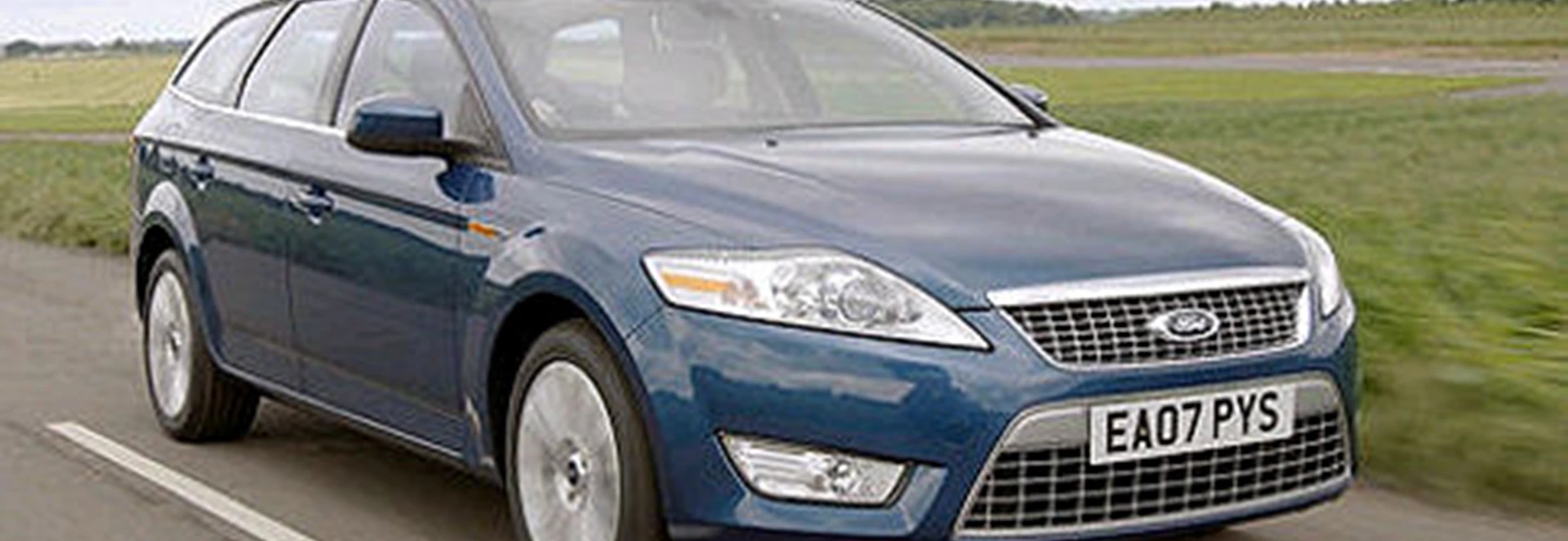From the moment the new Mondeo was first made available to the motoring press, it was apparent that some of the - gasp - 78 versions were considerably better than others. I don't know any writer who has failed to be impressed by the 2.5-litre petrol model, and having just covered 1900 miles in an estate fitted with that engine I can confirm that it is indeed a fine machine, though also rather an expensive one to run compared with other cars in the range.The engine is the turbocharged unit also found in the Focus ST. Producing 217bhp in this form (slightly less than in the ST), it's actually the work of Volvo, one of the manufacturers in Ford's shrinking Premier Automotive Group. It's strong, no question, to the point where it will shift the Mondeo from 0-60mph in 7.5 seconds and on to a top speed of 150mph, but in this application performance isn't particularly relevant.That's partly because the current Mondeo is not the kind of car you'd attempt to have fun with. It is nowhere near as agile as its predecessors, and on twisty roads it can be something of a chore.The main job I had lined up for the test car, though, involved almost none of that sort of thing. I had to cover about 1000 miles in two days, many of them with a partially disassembled rowing machine in the back, and it would have taken me some time to come up with a better vehicle for the job.That rowing machine, for example. The partial disassembly was prompted by the fact that in complete form it was 2.4 metres long, and there seemed no way of stowing it legally, comfortably and safely. But with part of it unbolted and taped to the rest, the machine, along with enough luggage for two people, took up only a fraction of the 1733 litres of space which the Mondeo estate provides when the rear seats are folded.Whether loaded with exercise equipment or not, this Mondeo proved to be a super mile-eater. The 2.5 turbo engine purred away unobtrusively for hour after hour, and since there is so much space for passengers, and the seats are well-suited to long runs, the whole escapade was far less tiring than it might have been. Having covered 1900 miles in a week, I felt that if I had the car for another week and had to drive it for another 1900 miles, well, that would be all right.A bit expensive, though. The official combined fuel economy figure is 30.4mpg, and I was able to beat that, though the fact that I did so much relaxed cruising meant that my failure to get anywhere near the extra urban stat of 41.5mpg was a bit disappointing. Economy in the low 30s related to a range of just over 400 miles, depending on how long as I was prepared to have the warning light glaring at me.The 30.4mpg combined consumption relates to 222g/km of CO2, so the 2.5 estate will be more heavily taxed than the turbo diesels, which manage nearly 48mpg and 156g/km respectively if - like the test car - they have six-speed manual gearboxes rather than automatic transmission.If you opt for one of the diesels - and that does seem to be the most sensible choice financially - you can save more money by sticking to a lower trim level. That's not really an option with the 2.5, since the engine is available only in the more generously-equipped cars.The generosity reaches its height in the Titanium X tested here. Standard equipment includes 17" alloy wheels with relatively low-profile tyres (which don't do as much harm to the ride quality as you might expect), blue-tinted glass, alcantara upholstery, halogen headlights, a keyless entry/ignition system, powered/heated door mirrors with puddle lights and front ambient lighting (the last two in particular providing an astonishing level of quality feel considering how cheap and simple they must have been to devise).Titanium X models also come as standard with the alarmingly-named Ford Convers+ HMI Cluster, which is really just one of those up-to-date versions of what we used to know as trip computers. It's controlled from the steering wheel, and there's a screen in the instrument panel, and everything works well; the system is certainly not as intimidating as those found in some rival cars, though you can't always reach the information you want very quickly.Not included in the Titanium X specification is satellite navigation, but this is worth going for because it's a very good system (on one occasion it prevented me from becoming hopelessly lost in Nottingham, which I'm sure I would have done otherwise) and, at £1000, quite a lot cheaper than many other satnavs.

Our Rating



